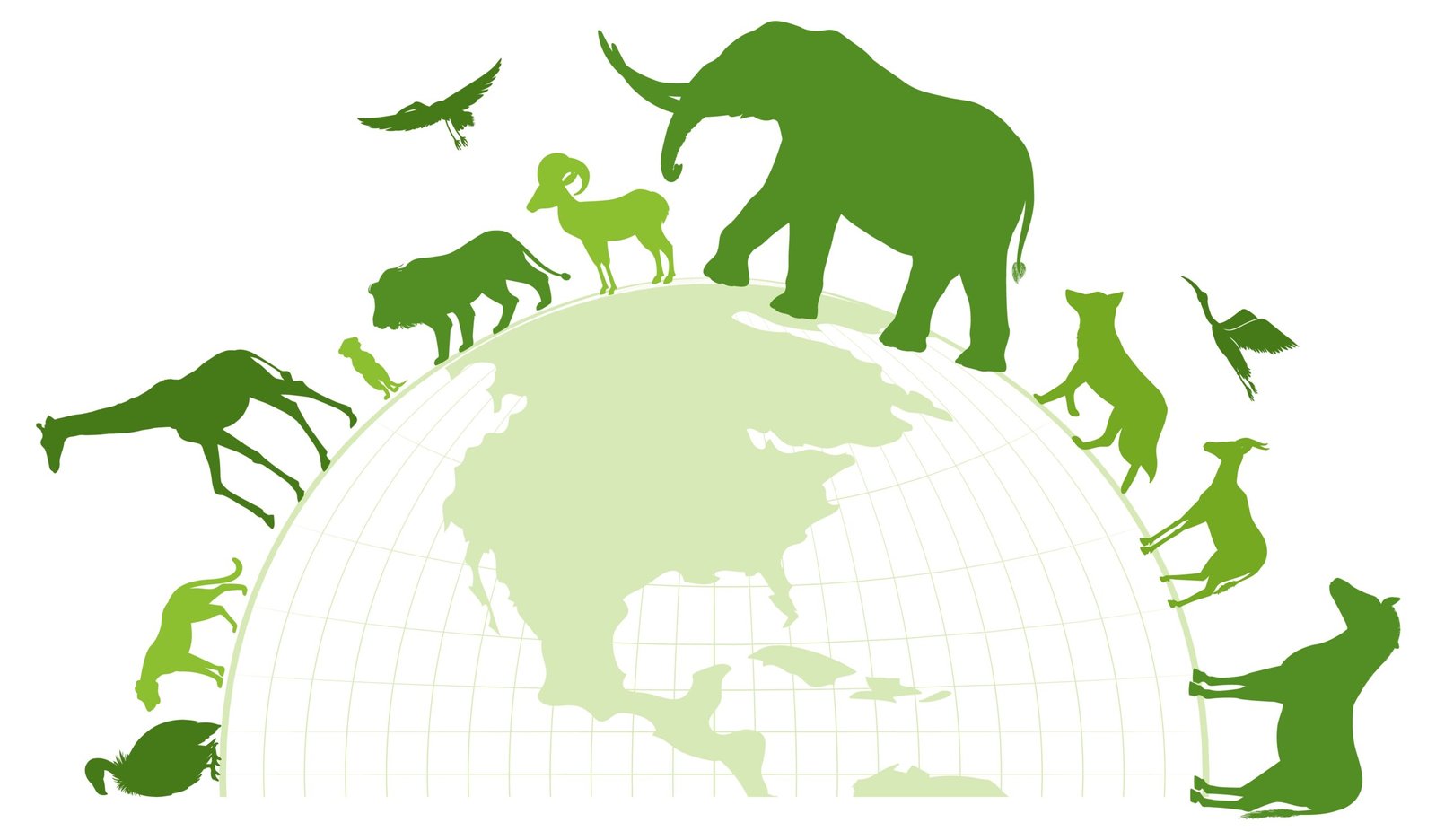Biodiversity is one of the many symbols of the exquisite and exquisite complexity of life on our planet. It includes the diversity of all living things, including the biggest mammals and the tiniest microbes, as well as the ecosystems in which they coexist. In addition to the sheer quantity of species, biodiversity also refers to the variety of life forms, genetic variations among species, and ecological processes that support life. Let’s examine the importance of biodiversity, the dangers it confronts, and the measures we can take to preserve this priceless natural legacy.
Describe Biodiversity
The variety of life on Earth is referred to as biodiversity, which is short for biological diversity. There are three primary parts to it
The diversity of species found in an area or environment is known as
1. Species Diversity
This comprises the relative abundance of each species in addition to the total number of species.
2. Genetic Diversity
Variations in genetic makeup within a species. The resilience and persistence of species are aided by the diversity found within populations, which enables species to adapt to shifting environmental conditions.
3. Ecosystem Diversity
The range of habitats found in a certain location, including marshes, forests, deserts, and seas. Every ecosystem is made up of a distinct group of living things interacting with their natural surroundings.

Complex interactions between these elements result in a delicate equilibrium that sustains life on Earth.
The Importance of Diverse Resources
Ecological Equilibrium and Adaptability
Ecosystems with greater diversity are more resistant to shocks and perturbations, including climatic shifts and natural disasters. Every species has a distinct function within its ecosystem, aiding in activities such as pollination, nitrogen cycling, and soil formation. For example, many flowering plants depend on bees and other pollinators to reproduce, and these plants in turn give other species food and habitat.
Additionally, biodiversity raises ecosystem productivity because a greater range of fauna can be supported by a variety of crops produced by a diversified array of plants. Thus, the variety of life forms contributes to the preservation of ecosystem services and functions including disease control and water purification.
Economic Value
Through its use in tourism, agriculture, and medicine, biodiversity benefits economies. Numerous flora and fauna serve as food sources, raw materials, and sources of therapeutic substances. For example, more than 70% of newly developed medications come from natural sources, underscoring the significance of preserving a variety of ecosystems for potential medicinal advancements.
A major component of agriculture is biodiversity. Food security and resistance to pests and illnesses are ensured by the genetic diversity found in crops and livestock breeds. In addition to providing habitat for natural pest predators and pollinators, biodiverse ecosystems also lessen the demand for chemical pesticides.
Experiences and appreciation of natural settings are the main focus of ecotourism, which supports biodiversity conservation in many countries and brings in substantial sums of money.
Cultural and Visual Worth
Biodiversity is aesthetically pleasing and enriches cultures. Many communities have strong relationships to the natural world, and customs, rituals, and folklore frequently highlight the roles that plants and animals play. Biodiversity fosters a sense of wonder and connection to the natural world, inspiring art, literature, and recreational activities.
The presence of wildlife and natural environments enhances human well-being by providing areas for leisure, rest, and spiritual rejuvenation. The aesthetic value of biodiversity can affect community satisfaction and property values as well.
Scientific Knowledge
Scientists can better comprehend biological processes and the history of evolution by studying a variety of life forms. Innovations in biotechnology, agriculture, and medicine depend on this understanding. Research on a variety of ecosystems, for instance, can assist guide management and restoration plans for these systems, thereby reducing the effects of habitat loss and climate change.
Research on biodiversity also provide light on how ecosystems work and what services they offer. By comprehending how different species interact with their surroundings, sustainable strategies that are advantageous to both human society and the environment can be developed.

Dangers to the Biodiversity
Despite its significance, human activity poses a serious threat to biodiversity. It is estimated that the present rate of species extinction is 1,000–10,000 times higher than the rate of extinction that occurs naturally, mostly because of the following factors:
Destroying Habitats
Natural ecosystems are destroyed by urbanization, agriculture, and deforestation, which results in the extinction of species. Coral reefs, grasslands, wetlands, and forests are some of the ecosystems most impacted by habitat loss.
Tropical rainforests, which are home to a major number of the world’s species, have suffered considerable losses due to deforestation, which is frequently caused by logging and the conversion of land for agriculture or urban development. Wetlands are being drained and transformed for agricultural and urban expansion, despite the fact that they offer vital ecological functions like flood control and water filtering.
Because of the fragmentation caused by urbanization, many species can no longer sustain viable populations in their isolated areas. In addition to interfering with migration patterns, habitat fragmentation restricts access to supplies.
Climate Change
Habitats are changed by global warming, which also has an impact on species behavior and distribution. Changes in mating and migration patterns, disturbances to food webs, and changes in the geographic ranges of species are all possible outcomes of climate change.
Global ecosystems are impacted by rising temperatures and shifting precipitation patterns. For instance, coral bleaching, which results from stressed corals expelling the symbiotic algae they depend on, causes extensive reef destruction. Coral reefs are extremely susceptible to temperature fluctuations. Similar to this, melting ice and changing habitats for animals like penguins and polar bears are causing fast changes in polar ecosystems.
Invasive species and habitat degradation are two more challenges to biodiversity that are made worse by climate change. Warming temperatures, for instance, can encourage the spread of invasive species into new regions, where they may
Disturbances
Pollutants such as chemicals, plastics, and others damage ecosystems and species. Numerous factors, such as industrial processes, agricultural practices, and urban runoff, can contribute to pollution.
Pesticides and heavy metals are examples of chemical pollutants that can have hazardous effects on plants and animals, interfering with their ability to reproduce and develop. Concern over plastic pollution is growing, especially in coastal habitats where plastic litter can entangle or consume wildlife.
Runoff from agriculture contributes to nutrient contamination, which causes eutrophication—a condition in which an overabundance of nutrients in water bodies results in algae blooms and oxygen depletion, creating dead zones where aquatic life cannot thrive.
Overuse of power
Animal populations are being destroyed by overfishing, killing, and deforestation more quickly than they can rebound. The unsustainable exploitation of natural resources results in a decrease in the number of species and has the potential to wipe them out.
By lowering fish populations and changing food webs, overfishing has a major negative influence on marine ecosystems. Due to overfishing and harmful fishing methods like bottom trawling, which harms seafloor habitats, several fish species are currently threatened or endangered.
Numerous species are threatened by hunting and poaching for wildlife items, especially large mammals, such as ivory, rhino horn, and bushmeat. In addition to harming tree species, unsustainable logging techniques also deplete forest resources and disturb ecosystems, which affects the wide range of organisms that rely on forest habitats.
Protecting Biodiversity
Conservation Efforts
Protecting animals and their habitats requires the creation of protected places, such as national parks and wildlife reserves. Protected areas support ecological services and processes while offering a haven for many species.
In addition, conservation initiatives aim to bring endangered species back into the wild and repair damaged ecosystems. Reforestation, wetland rehabilitation, and coral reef restoration are examples of habitat restoration projects that contribute to the recovery of ecosystem services and biodiversity.
Initiatives for the conservation of particular species are concentrated on preserving and reviving populations of endangered and threatened species. Programs for captive breeding and reintroduction, habitat management, and legal safeguards are a few examples of these initiatives.
Ecological Methods
Sustainable forestry, fisheries, and agriculture methods guarantee the responsible use of natural resources. This include lowering the usage of pesticides, encouraging organic farming, and putting in place quotas to stop overfishing.
Crop rotation, agroforestry, and integrated pest control are examples of sustainable agriculture techniques that can preserve viable farming systems while improving biodiversity and ecosystem services. The biodiversity of forests and the health of their ecosystems are protected by sustainable forestry techniques including buffer zone maintenance and selective logging.
By limiting capture sizes, safeguarding spawning grounds, and employing selective fishing gear, sustainable fishing methods contribute to the long-term health of fish populations and marine ecosystems.
Climate-Related Action
Protecting ecosystems from the damaging consequences of global warming can be achieved through mitigating climate change by encouraging renewable energy sources and lowering greenhouse gas emissions.
By switching to renewable energy sources like hydropower, wind, and solar, greenhouse gas emissions can be reduced and dependency on fossil fuels can be reduced. Reducing emissions also involves implementing energy-efficient practices, such as installing energy-efficient equipment and strengthening building insulation.
In order to combat climate change, carbon sinks—such as wetlands, oceans, and forests—that absorb and store carbon dioxide must be preserved. Projects aimed at afforestation and reforestation, along with the preservation of current forests, aid in the sequestration of carbon and the slowing of global warming.

Education and Public Awareness
Community involvement in conservation initiatives can be sparked by promoting eco-friendly practices and increasing understanding of the value of biodiversity. Education initiatives have the power to encourage the next generation of environmental stewards.
Initiatives for environmental education in communities, schools, and the media can raise awareness of biodiversity and its significance. Initiatives that involve participants in practical conservation tasks, including planting trees, observing wildlife, and restoring habitats, cultivate a feeling of interconnectedness with the natural world and accountability for its preservation.
Reducing trash, conserving water, and buying eco-friendly items are examples of sustainable lifestyles that help lessen the influence of humans on biodiversity. Campaigns to raise public awareness can also support laws and procedures that safeguard biodiversity.












Very interesting info!Perfect just what I was looking
for!Expand blog